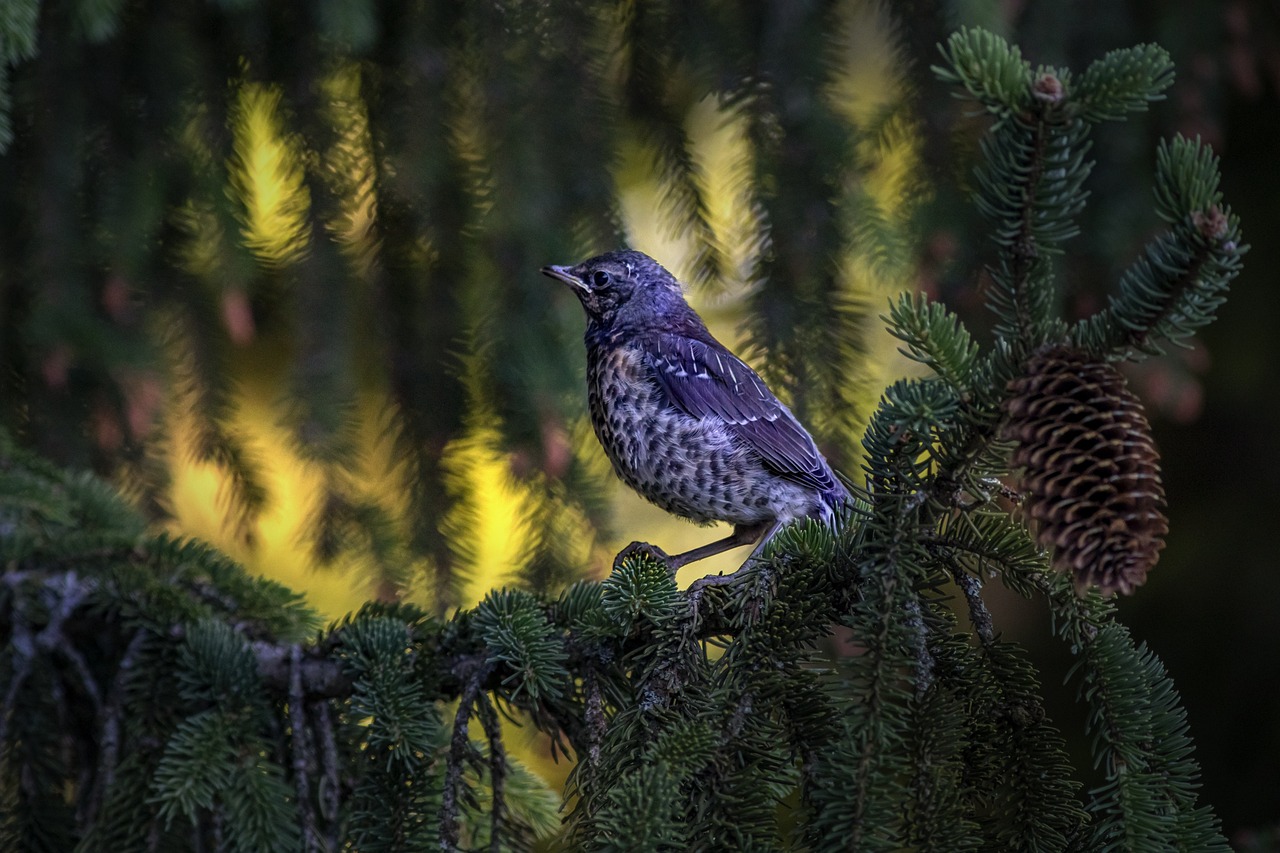The Fieldfare (Turdus pilaris) is a member of the thrush family, known for its distinctive plumage and migratory behavior. Here’s a detailed overview of this fascinating bird:
Description
- Size: The Fieldfare is a medium-sized thrush, measuring about 25 centimeters (10 inches) in length, with a wingspan of 39-42 centimeters (15-17 inches).
- Appearance:
- Plumage: It has a grey head, nape, and rump. The back and wings are chestnut brown, and the underparts are white with dark streaks on the breast and flanks.
- Tail: The tail is long and black, providing a stark contrast to the grey rump.
- Beak: The beak is yellow with a darker tip.
- Eyes: The eyes are dark, surrounded by a subtle pale ring.
Habitat
- Distribution: Fieldfares are native to Europe and Asia. They breed in northern Europe and Asia and migrate to southern Europe, North Africa, and the Middle East for the winter.
- Preferred Environment: They favor open woodlands, farmlands, and scrublands during the breeding season. In winter, they can often be found in fields, parks, and gardens, particularly where there are fruiting trees and berry bushes.
Behavior and Ecology
- Diet: Fieldfares primarily feed on invertebrates such as earthworms, insects, and their larvae during the breeding season. In winter, their diet shifts to berries, fruits, and seeds. They are particularly fond of rowan and hawthorn berries.
- Foraging: They forage both on the ground and in trees. In winter, they are often seen in large flocks, sometimes mixed with other thrush species, foraging for food in open fields and hedgerows.
- Vocalization: Fieldfares have a distinctive chattering call, often described as a “chack-chack” sound. They also produce melodious songs during the breeding season, which are more subdued compared to their calls.
Reproduction
- Breeding Season: The breeding season occurs from April to July.
- Nesting: Fieldfares build their nests in trees or bushes, using twigs, grass, and mud. The nest is often lined with softer materials like feathers or moss.
- Eggs and Incubation: Females lay 4-6 blue-green eggs with reddish-brown spots. The eggs are incubated for about 13-14 days.
- Chicks: Both parents feed the chicks, which fledge about 14-16 days after hatching. The young remain dependent on their parents for a short period after leaving the nest.
Conservation Status
- Threats: Fieldfares face threats from habitat loss due to agricultural intensification and urbanization. Harsh winter conditions and food scarcity can also impact their populations.
- Conservation Efforts: Conservation efforts focus on preserving their natural habitats and ensuring the availability of food sources during winter. In some areas, providing supplementary food, such as berries and fruit, helps support Fieldfare populations.
Interesting Facts
- Migratory Behavior: Fieldfares are known for their extensive migrations. They travel from their breeding grounds in the north to wintering grounds in the south, often covering significant distances.
- Flock Dynamics: In winter, Fieldfares form large, noisy flocks. This social behavior helps them locate food more efficiently and provides some protection against predators.
Observing Fieldfares
- Best Places: To observe Fieldfares, visit open fields, farmlands, and wooded areas in their breeding range during spring and summer. In winter, look for them in parks, gardens, and countryside areas with berry-bearing trees and bushes.
- Watching Tips: Early morning and late afternoon are good times to observe these birds as they are most active during these periods. Binoculars can help you spot their distinctive plumage and observe their foraging behavior.
The Fieldfare (Turdus pilaris) is a remarkable bird with its striking plumage, social behavior, and migratory patterns. Its presence adds vibrancy to the landscapes it inhabits, making it a delightful subject for bird watchers and nature enthusiasts.
Visited 172 times, 28 visit(s) today
Views: 343
Subscribe to the newsletter:
